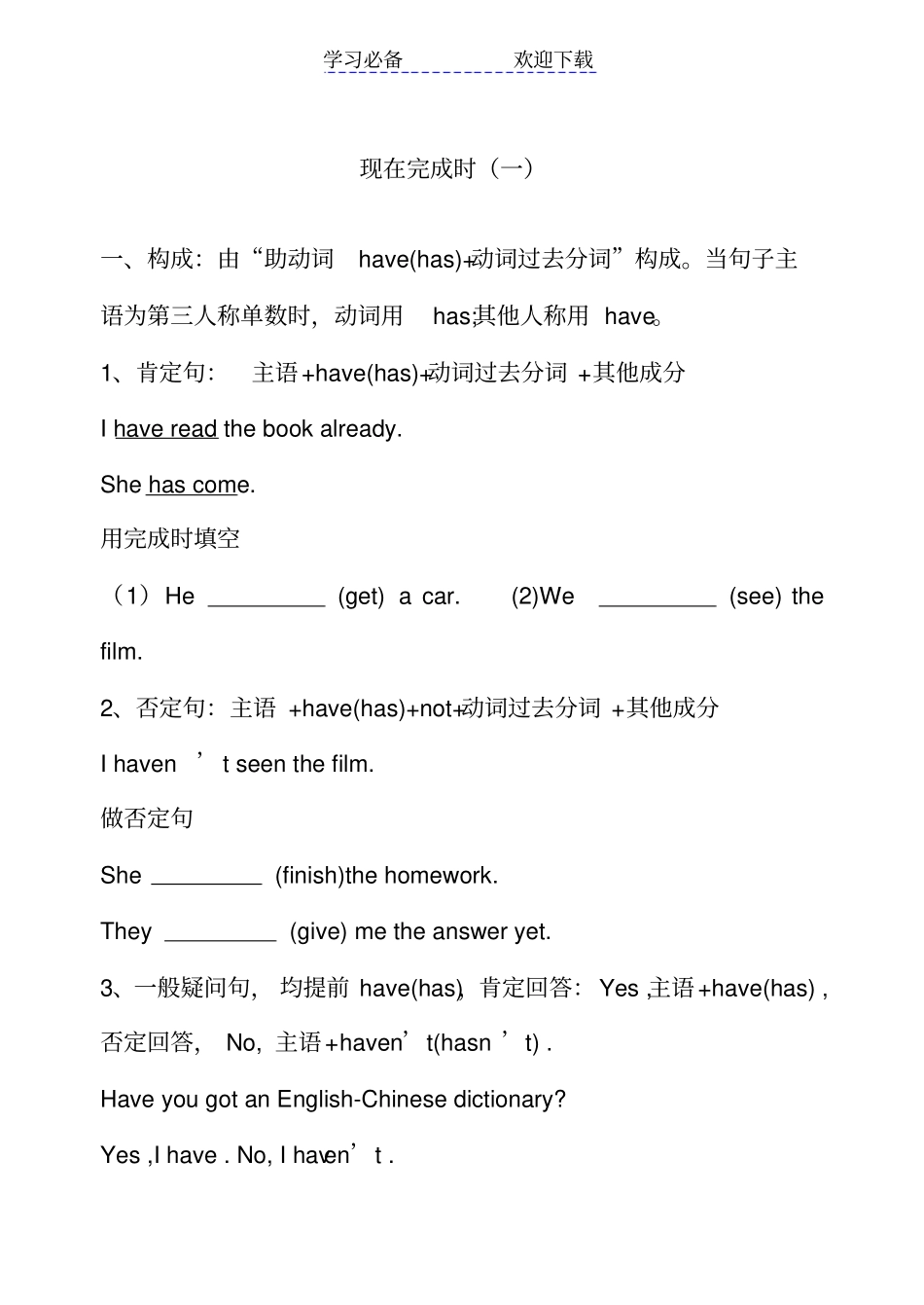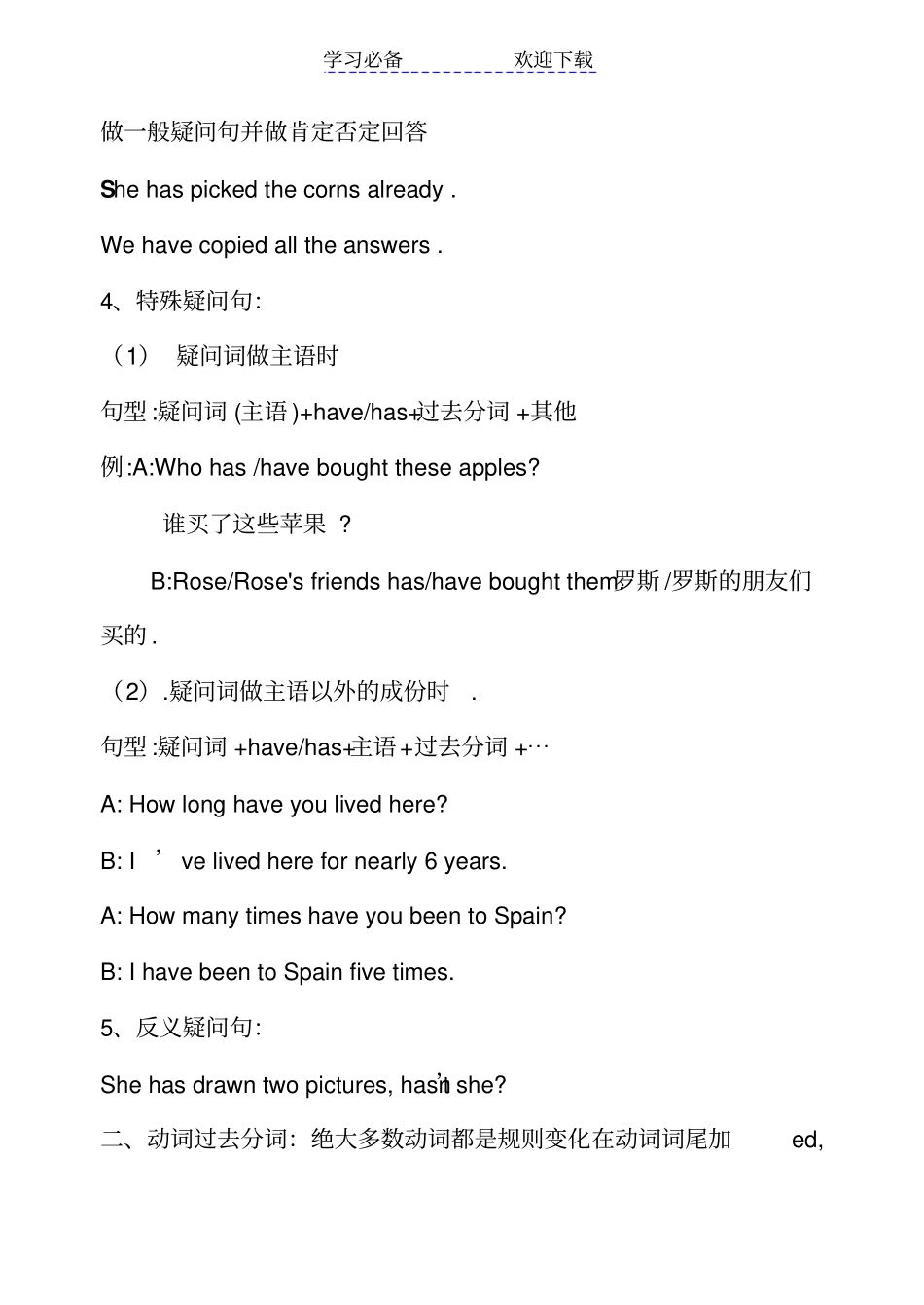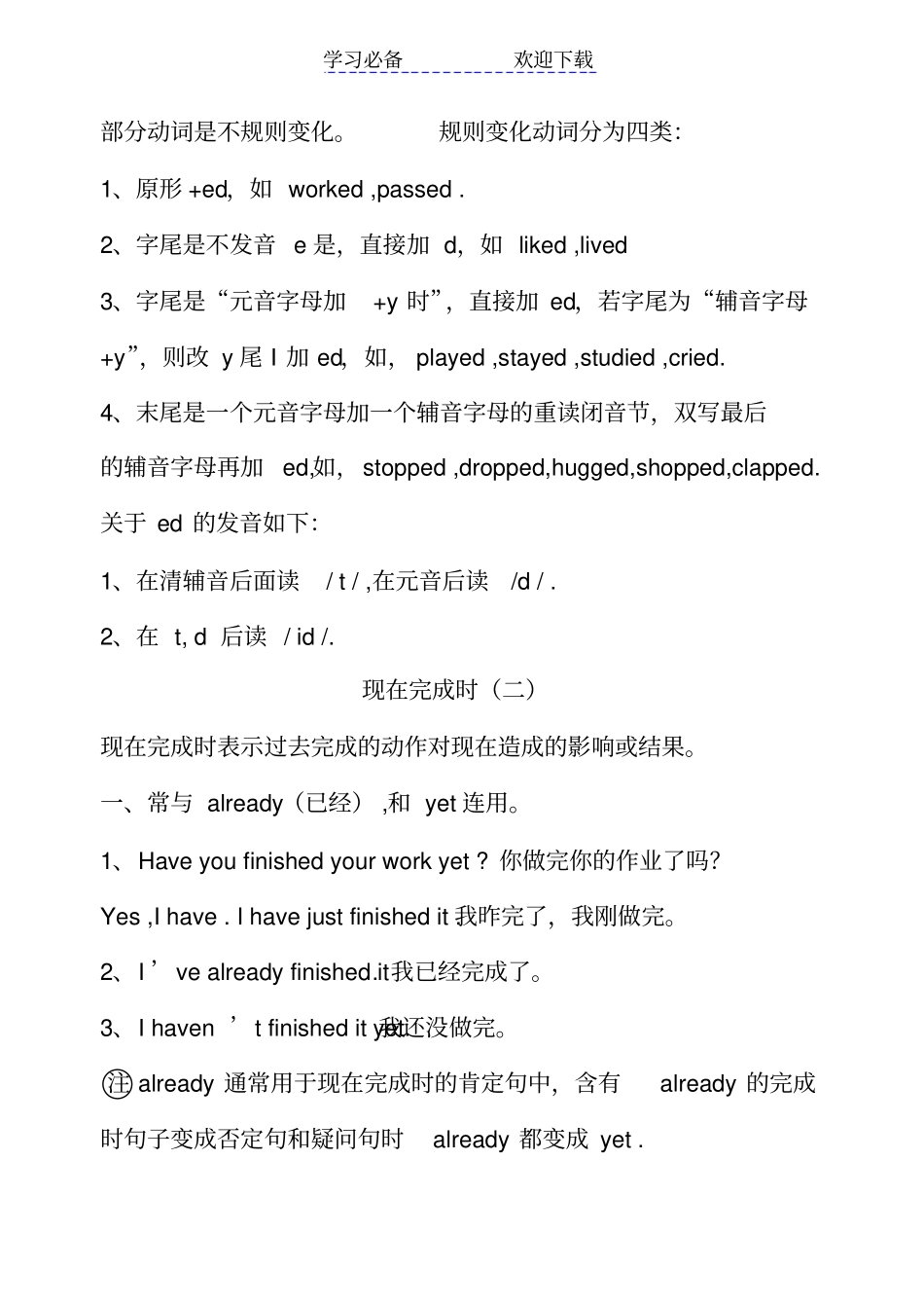学习必备欢迎下载现在完成时(一)一、构成:由“助动词have(has)+动词过去分词”构成。当句子主语为第三人称单数时,动词用has;其他人称用 have。1、肯定句:主语+have(has)+动词过去分词 +其他成分I have read the book already. She has come. 用完成时填空(1)He (get) a car. (2)We (see) the film. 2、否定句:主语 +have(has)+not+动词过去分词 +其他成分I haven’t seen the film.做否定句She (finish)the homework. They (give) me the answer yet. 3、一般疑问句, 均提前 have(has),肯定回答:Yes ,主语+have(has) ,否定回答, No, 主语+haven’t(hasn ’t) .Have you got an English-Chinese dictionary? Yes ,I have . No, I haven’t .学习必备欢迎下载做一般疑问句并做肯定否定回答She has picked the corns already . We have copied all the answers . 4、特殊疑问句:(1) 疑问词做主语时句型 :疑问词 (主语 )+have/has+过去分词 +其他例:A:Who has /have bought these apples? 谁买了这些苹果 ? B:Rose/Rose's friends has/have bought them.罗斯 /罗斯的朋友们买的 . (2).疑问词做主语以外的成份时. 句型 :疑问词 +have/has+主语+过去分词 +⋯ A: How long have you lived here? B: I’ve lived here for nearly 6 years.A: How many times have you been to Spain? B: I have been to Spain five times. 5、反义疑问句:She has drawn two pictures, hasn’t she? 二、动词过去分词:绝大多数动词都是规则变化在动词词尾加ed,学习必备欢迎下载部分动词是不规则变化。规则变化动词分为四类:1、原形 +ed,如 worked ,passed . 2、字尾是不发音 e 是,直接加 d,如 liked ,lived 3、字尾是“元音字母加+y 时”,直接加 ed,若字尾为“辅音字母+y”,则改 y 尾 I 加 ed,如, played ,stayed ,studied ,cried. 4、末尾是一个元音字母加一个辅音字母的重读闭音节,双写最后的辅音字母再加ed,如,stopped ,dropped,hugged,shopped,clapped. 关于 ed 的发音如下:1、在清辅音后面读/ t / ,在元音后读/d / . 2、在 t, d 后读 / id /. 现在完成时(二)现在完成时表示过去完成的动作对现在造成的影响或结果。一、常与 already(已经) ,和 y...


